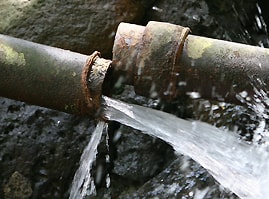EPA Update on Pipeline Testing

The EPA has published a Clarification Note on the Requirements for Underground Pipeline Testing at Industrial and Waste Licensed Sites. Within the guidance note there is an emphasis on the definitions of foul drains, process drains and stormwater drains. Foul drains can contain bacterial and ammonia contamination and are required by all licences to be tested for their integrity due to their potential to contaminate groundwater.
Currently, stormwater is defined as ‘rainwater run-off from roof and non-process areas’ by the EPA in licences. The note highlights that uncontaminated stormwater run-off pipelines from non-process areas are not subject to testing and are outside the scope of the guidance. However, stormwater run-off from process areas of a site may contain potentially polluting substances and, as such, these pipelines fall within the scope of the integrity testing requirements conditioned in licences.
Integrity testing of stormwater pipelines from process areas is necessary in order to protect the quality of groundwater as required by the EU Groundwater Regulations (2010). Stormwater from process areas could potentially contain polluting substances in the following scenarios:
- Spillages in the process area during transport;
- Overflows from sumps;
- Leaks from infrastructure in the process area such as elevated pipes and signage, cooling systems and any systems for abatement found on roofs;
- Discharge of bund water;
- Use of pipelines in emergency containment infrastructure.
A standard condition of a licence currently is that the integrity of such pipelines must be tested by means of a pressure test before their use ‘within X months of the date of grant of a licence and testing must be carried out every three years after this’.
These test results must then be reported to the EPA. The guidance note acknowledges that certain pipelines cannot be subject to pressure testing for a variety of reasons. In this scenario, discussion can be carried out with the EPA and a visual inspection may be agreed, subject to compliance with Appendix G of the EPA IPC Guidance Note: Guidance Note on Storage and Transfer of Materials for Scheduled Activities, (2004).
The EPA also acknowledges that integrity testing can be costly for sites. The specifics surrounding the timing and planning of testing may be discussed with individual EPA inspectors.
The EPA Clarification Note in full can be found here.
August 2019
